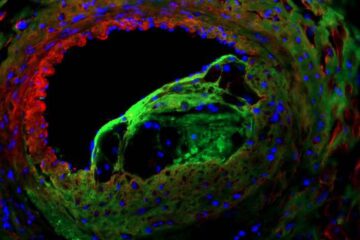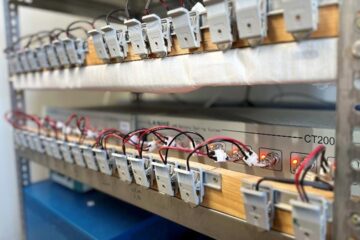Robotic surgery for head and neck cancer shows promise

Head and neck squamous cell carcinomas account for about 4 percent of malignant tumors diagnosed in the United States each year. Currently the standard minimally invasive surgery for these tumors is transoral laser microsurgery.
Previous studies have shown that the robotic surgery was better for patients to regain the ability to swallow, a common and serious side effect, but never looked at cure rate. Manguson wanted to know if you could achieve function and get rid of the cancer at the same time. This study, published Dec. 20, 2010, in the Archives of Otolaryngology – Head & Neck Surgery, showed you could.
UAB otolaryngologist and the study's senior author J. Scott Magnuson, M.D., and colleagues from UAB and the Mayo Clinic looked at 89 patients with various stages of head and neck squamous cell carcinomas whose primary tumor was resected using the da Vinci Robot. All of the patients were monitored during their hospital stay and up to 33 months after surgery.
“The overall two-year survival rate for these patients was 86.3 percent, which is comparable to the standard treatment,” Magnuson, also a scientist in the UAB Comprehensive Cancer Center, said. “Those with earlier-stage tumors appeared to have slightly better recurrence-free survival than those with later stages, but it was not statistically significant.”
Magnuson said patient swallowing varied depending on the location of the tumor, preoperative swallowing ability, cancer stage and patient age, and their findings on function were consistent with previous research. Some patients, he said, tolerated an oral diet one to two days after surgery while some were discharged with a short-term nasal feeding tube or long-term gastric feeding tube, including some who were feeding tube-dependent prior to surgery.
“Of note,” he added, “all of the patients in the study had regained full swallowing ability at the time of the last follow up visit and none remained feeding-tube dependent.”
Magnuson said the study's results are encouraging and show robotic surgery offers a technically feasible and oncologically sound alternative treatment for some patients with head and neck squamous cell carcinomas, but he cautions more work needs to be done.
“This is a relatively new technique, and long-term oncologic outcomes are not available,” he said. “However, the early functional and oncologic results justify the continued treatment of select patients with head and neck squamous cell carcinomas with robotic-assisted surgeries.”
About the UAB Comprehensive Cancer Center
The UAB Comprehensive Cancer Center is among the 40 cancer centers in the nation to meet the stringent criteria for the National Cancer Institute's comprehensive designation. The center is a leader in groundbreaking research, reducing cancer disparities and leading-edge patient care.
About UAB
Known for its innovative and interdisciplinary approach to education at both the graduate and undergraduate levels, the University of Alabama at Birmingham (UAB) is the state of Alabama's largest employer and an internationally renowned research university and academic health center; its professional schools and specialty patient-care programs are consistently ranked among the nation's top 50. Find more information at www.uab.edu and www.uabmedicine.org.
EDITOR'S NOTE: The University of Alabama at Birmingham (UAB) is a separate, independent institution from the University of Alabama, which is located in Tuscaloosa. Please use University of Alabama at Birmingham on first reference and UAB on second reference.
Media Contact
More Information:
http://www.uab.eduAll latest news from the category: Medical Engineering
The development of medical equipment, products and technical procedures is characterized by high research and development costs in a variety of fields related to the study of human medicine.
innovations-report provides informative and stimulating reports and articles on topics ranging from imaging processes, cell and tissue techniques, optical techniques, implants, orthopedic aids, clinical and medical office equipment, dialysis systems and x-ray/radiation monitoring devices to endoscopy, ultrasound, surgical techniques, and dental materials.
Newest articles

Solving the riddle of the sphingolipids in coronary artery disease
Weill Cornell Medicine investigators have uncovered a way to unleash in blood vessels the protective effects of a type of fat-related molecule known as a sphingolipid, suggesting a promising new…

Rocks with the oldest evidence yet of Earth’s magnetic field
The 3.7 billion-year-old rocks may extend the magnetic field’s age by 200 million years. Geologists at MIT and Oxford University have uncovered ancient rocks in Greenland that bear the oldest…

Decisive breakthrough for battery production
Storing and utilising energy with innovative sulphur-based cathodes. HU research team develops foundations for sustainable battery technology Electric vehicles and portable electronic devices such as laptops and mobile phones are…





















